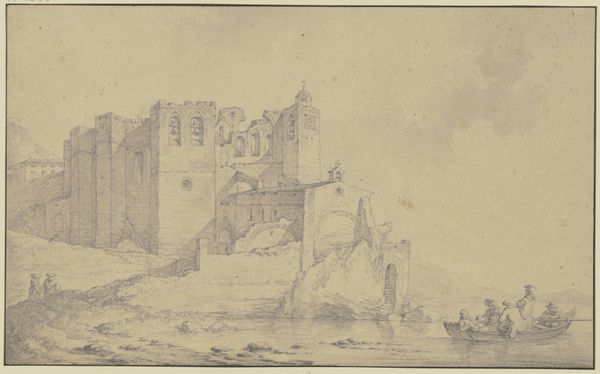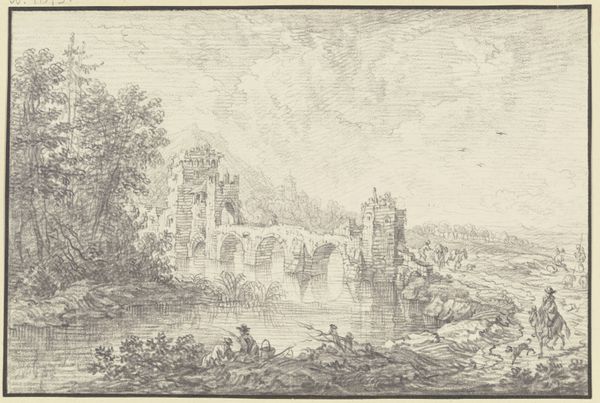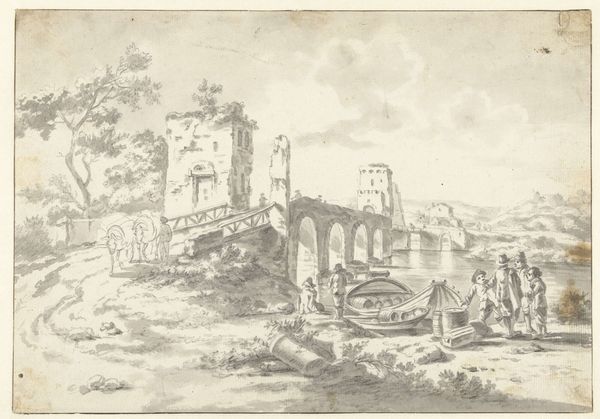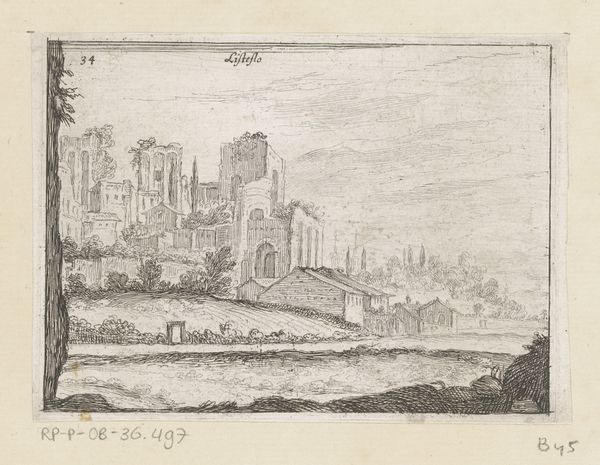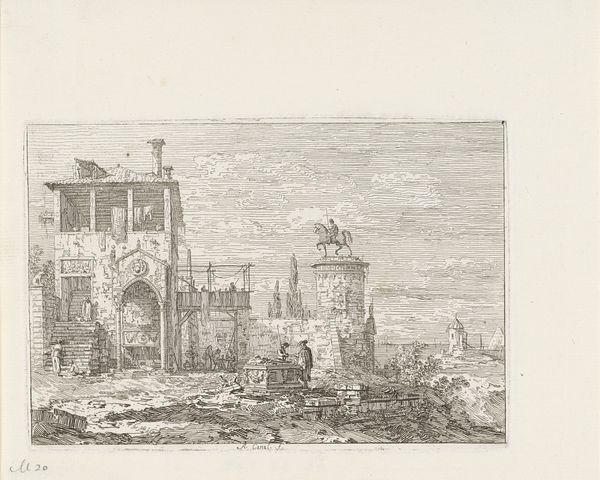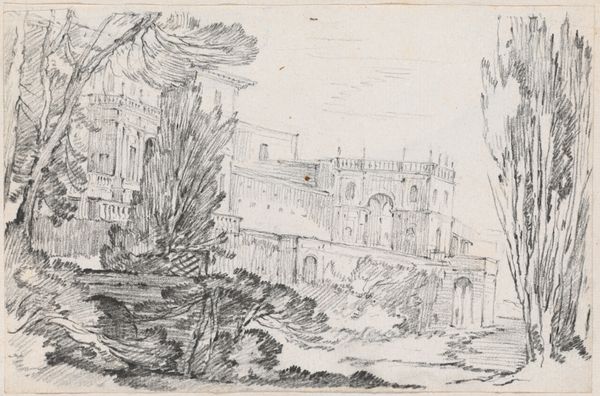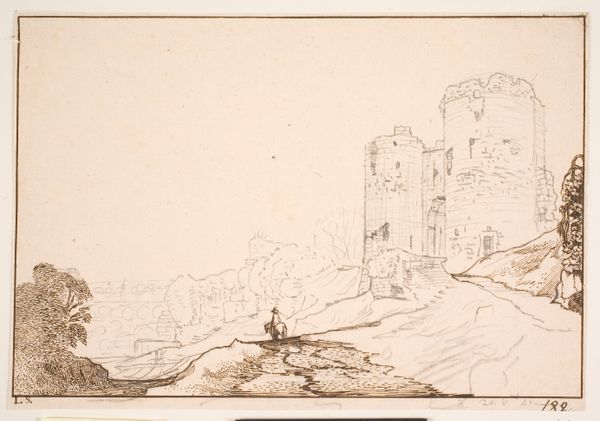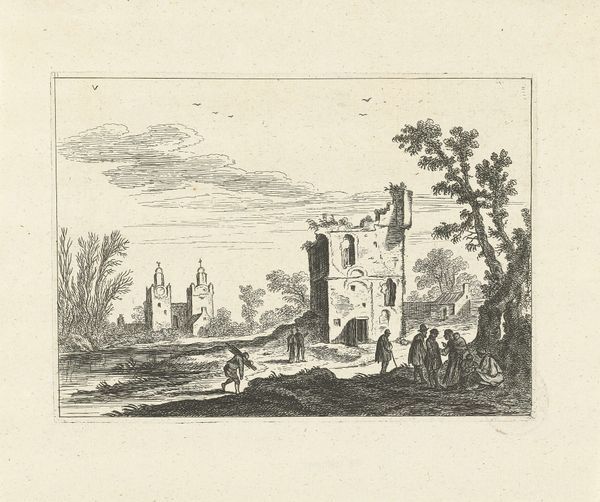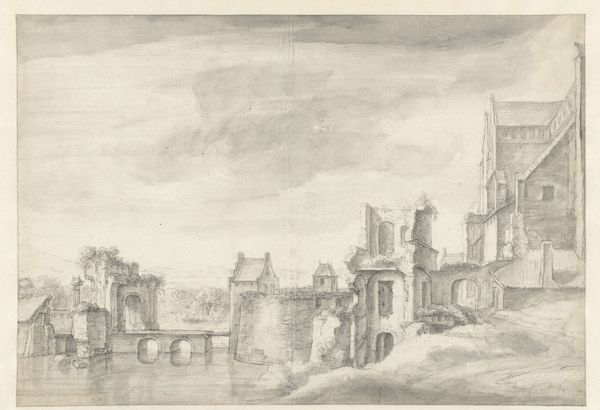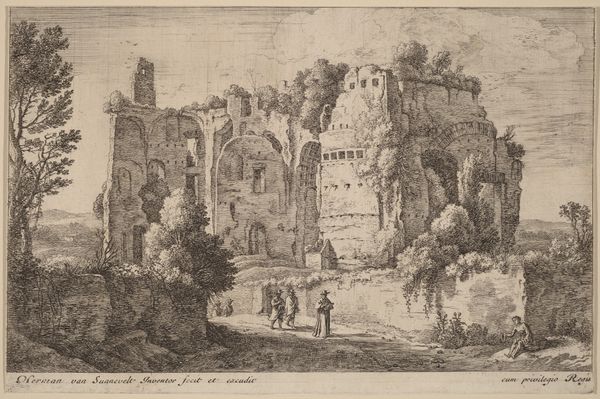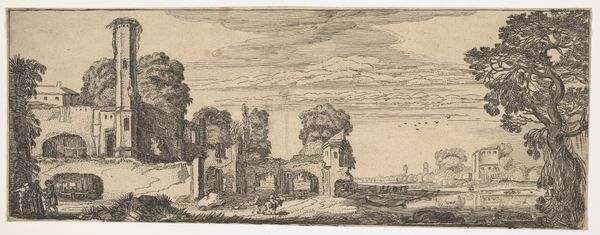
drawing, paper, ink
#
drawing
#
aged paper
#
light pencil work
#
baroque
#
old engraving style
#
sketch book
#
landscape
#
paper
#
personal sketchbook
#
ink
#
pen-ink sketch
#
pen work
#
sketchbook drawing
#
cityscape
#
history-painting
#
storyboard and sketchbook work
#
sketchbook art
#
realism
Dimensions: height 198 mm, width 292 mm
Copyright: Rijks Museum: Open Domain
Editor: This is "Ponte Molle," a pen and ink drawing on paper made after 1652 by an anonymous artist, currently residing in the Rijksmuseum. The sketch-like quality and aged paper give it a feeling of looking at a historical document, almost like a scene from an old explorer’s journal. What can you tell me about the historical context of this drawing? Curator: Looking at “Ponte Molle,” we see more than just a landscape; we see a specific location and its shifting role in society. Ponte Molle, also known as the Milvian Bridge, was historically significant for being the site of Constantine's victory in 312 AD. The imagery surrounding Constantine became incredibly politically charged. Consider the way its portrayal shifts depending on the patron or political agenda of the artist, as the symbolism became a tool to communicate legitimacy of power. Editor: So the location itself carries meaning? How did this bridge come to be depicted in drawings such as these? Curator: Exactly. By the 17th century, the bridge also was used as a popular subject for artists in the Grand Tour circuit, where young European elites toured Europe to experience art, culture, and history. An artist would capture these sights in sketches and paintings, which in turn served as status symbols but also to communicate power. Think about how these drawings, easily reproducible, could spread ideas about Rome, influencing perceptions of the city's importance, power and historical legacy. Editor: So it is less a representation of a real location, and more a representation of power dynamics and societal change? Curator: Precisely! What seems at first glance a simple landscape drawing can unpack the intertwined history of politics, artistic practice and social status, revealing how art played a vital public role in shaping cultural perceptions and historical narratives. This reminds me that our perspective is never neutral, always viewed from our contemporary world. Editor: I never would have looked that deeply, thank you. I’ll consider the power relations in a work next time I see it!
Comments
No comments
Be the first to comment and join the conversation on the ultimate creative platform.
